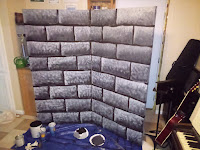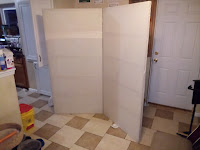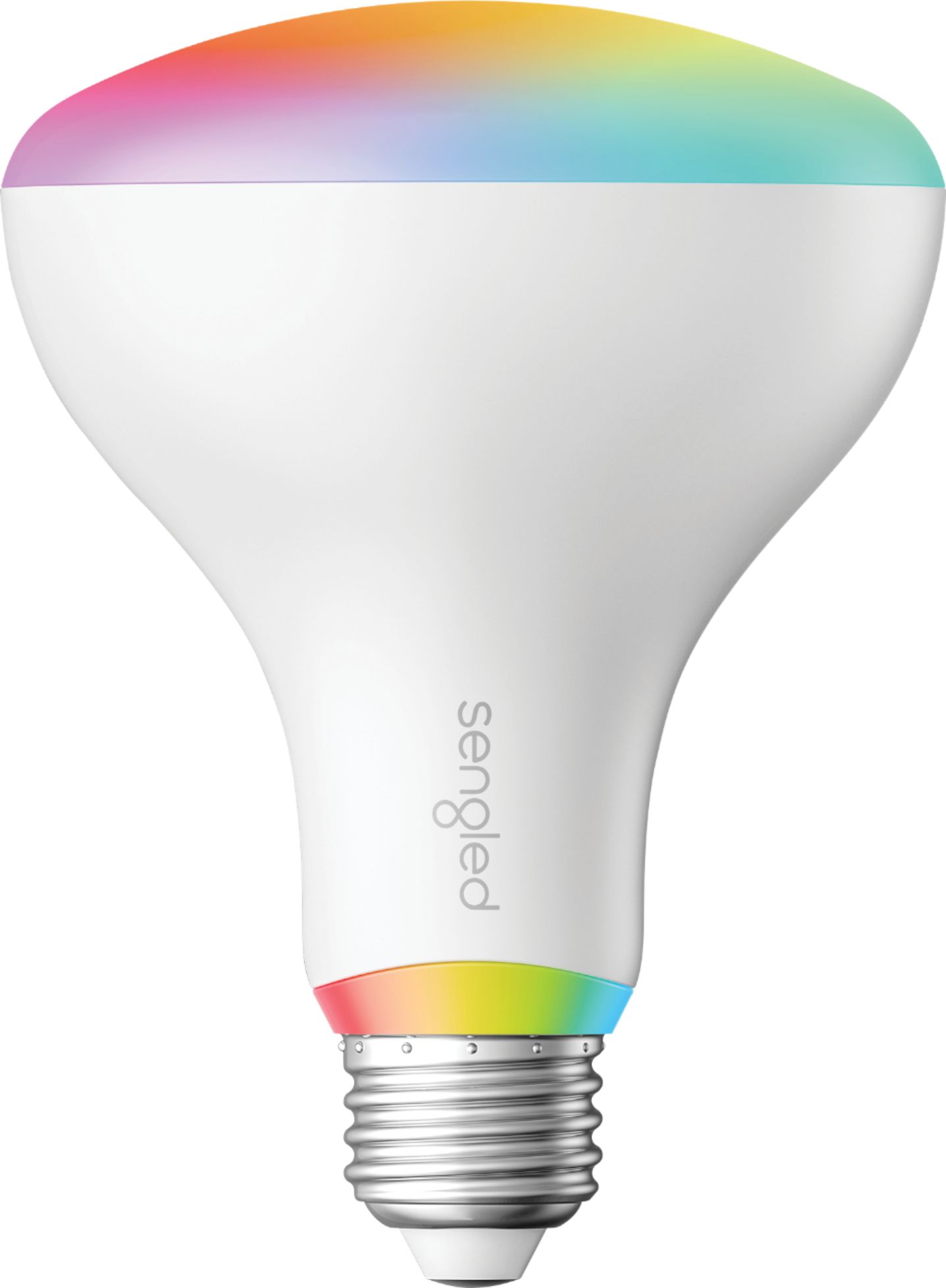Tuesday, December 28, 2021
2x4ft Mobile Platforms
Medieval Hair Dressing
One of the best ways to sell your costume is through a period hat or hair dressing.
For women, here is a quick tutorial for a simple veil:
Or for a veil and wimple, here is another video:
For men I recommend a coif or hood:
Printable Coif Pattern: (PDF)
Coif tutorial:
Hood tutorial:
Medieval Clothing Crash Course
I was browsing the web for some simple costumes for a Shakespeare production and stumbled on this video that is essentially a crash course in medieval costumes on a budget. I recommend everything this guy says, so take a look and start assembling your costume today!
Wednesday, December 22, 2021
Stone Wall Backdrop
There are two main types of flats, Broadway or canvas, and Hollywood or wood. Canvas are the most common in schools because they cost less to build and are light weight and easy to store. Wood flats are used in television and at the college level because they are sturdy, easy to configure, and if built properly can last for decades.
Here are some videos showing how to make each type of flat.
Broadway:
Hollywood:
For our stone wall project I had some old flats that needed new canvas, so that is what we will run with.
I started by removing the old muslin from the flats, then stapled the new muslin into place. Next I needed to prime the flat. Knowing that I would be painting a stone wall, I decided to prime the flats with black paint instead of the usual white. This allowed me to save time later by not needing to shade in the grout lines.Sunday, December 19, 2021
The Best No Sew Bow Tie
My oldest son has an affinity for bow ties, so we decided to make him a bow tie in his favorite color. We looked through dozens of patterns online and stumbled across this amazingly simple pattern that you can make in less than an hour once you have everything gathered.
I can't take credit for this one, but I will definitely pass this along to anyone who needs a quick and simple bow tie!
Friday, December 17, 2021
Light Positions
Knowing that the above scenario is all too common, you do still have options for lighting your show. Let's add in the additional issue of budget and say that all you have available are some clamp lights from the local hardware store and a handful of LED or CFL bulbs. What can we do to light our show?
The 45 Degree Rule
Wash vs Area
Foot Lights
Low Beam
Truss or T-stand
Corner Lighting
A Combination
Monday, December 6, 2021
Free Scripts
Lighting Kits
Budget Kit
If you are super strapped for cash, go to your local harware store and pick up some scoop lights with LED floodlight bulbs. This is about as inexpensive as you can get. Also grab some dimmer switches and extension cords for an entry level light board. I don't recommend running more than 4-5 instruments per dimmer with this set up. This solution is for small to medium stages.
Medium Kit
Same scoop lights as the Budget Kit, but this time get smart bulbs with color options and a wifi router. This will take some technical know how to set up, but the lights can be run from your phone!
Junior Pro Kit
For smaller stages, get 4 low cost LED instruments (the kind DJs use) and an inexpensive dmx controller. This will give you lots of versatility for the smallest price tag. Still requires some technical know how, but no wifi router!
Professional Kit
Get 12-16 Pro LED instruments and a dmx controller. You should be able to do whatever you need to with this kit on medium and large stages.
Platforms
The first thing you need to perform a play is an area for your actors to stand on. This is referred to as an "acting area." On a large stage you may have multiple acting areas, where on a small stage you may only have one. Each acting area needs to be lit, and dressed for the scene you will perform there.
But what if you don't have a stage at all? Say you are renting space at a community center, or you are a theater teacher and all you have is your classroom.
Never fear! In this article we will teach you how to build a simple platform that will become your acting area or mini-stage. You can tailor the dimensions and number of platforms to fit the space you have available. This design can also be used on a larger stage to help break up your acting areas. You can even stack them to create a dynamic set for your actors to perform on.
The Build
Most dimensional lumber in the USA comes in 4x8 foot dimensions, so we will use that as our template for this build. If you have a different size available, tweak the plans to fit what you have.
Standard floors have rails running under them with a skin of sheet lumber on top. These rails are usually spaced 16 inches apart. The shorter the run, the stronger these rails are. So, with that in mind we want to build our frame so it looks like this:
Build List
3ft 9in rail x 5
8 x 4ft sheet of 1/2 or thicker plywood x 1
11.5in feet x 6
This is for a single platform, if your space allows, you can make more than one and get an 8 x 8ft stage, or 4 x 16ft stage, etc... You could even add a 4 x 4ft platform to one end of your stage for an even more elevated acting space.
Curtains
There are several types of curtains used on a stage. Let's take a look at a few of them:
Main/Grand Curtain
Legs
Teaser
Runner
Tall Trees on the Cheap
Check out this awesome video on how to make awesome big trees for very little money!
Monday, June 14, 2021
Building the Frame
After playing around with a few different ideas for the frame, I decided to start with a solid wheel base. For the steering mechanism I am using the largest hinges I could find at Lowes. I drilled one of the existing holes larger to accept the bolt from the bicycle wheels, then bolted it to the 2x6 that acts as the front of the frame.
For the back of the bike I am using the existing suspension of a mountain bike and attached it with a large section of all thread to the 2x3s that run the length of the frame. The suspension rod is attached using an old satellite dish mounting bracket. I still need to check how true the wheels are and if they hold air, but the wheel base is now complete.
A simple weight test showed that it could hold me and my daughter without any problems. Next I need to get the pedals attached and the chain and idlers installed. I also need to finish building the steering mechanism, and reconnect the rear brake and derailer. Once a seat is installed I should be able to drive it as a recumbent bike, after that I will probably work on the canopy, and lights, then install the electric assist after the fact.
I am really happy with my progress so far. Hopefully I will have it fully enclosed and electrified by the time fall hits.
Let me know your thoughts in the comments below.
Wednesday, April 28, 2021
First steps: Gathering Old Bikes
For the frame I am using scrap wood left over from several other projects, including a small pallet. This is just a prototype so I can learn the basics, the finished model will be much more streamlined.
Wednesday, April 14, 2021
A New Goal- an enclosed ebike!
After doing some research into the laws governing Electric Cars and NEVs in my area, I discovered it was going to be a real headache to get something inexpensive for me to drive around town. That was when it hit me. I don't need a Tesla or something like that if I am only going to use the electric car for travel around town, so I started looking at alternatives and discovered a bit of a loophole in the laws for the state of Idaho.
A Class 2 electric assisted bicycle is defined as having up to three wheels, it can go up to 20 mph without pedaling, but can go faster if you do pedal. It is not restricted in what streets it can be driven on, but must stay to the right as much as possible. These bikes can be enclosed making them usable year round, and may have blinkers, windshield wipers, headlights, taillights, etc... They are not required to be registered, have insurance, or a license, so even my 14 year old son, could drive it!
In August 2019, the state of Idaho passed a measure that defined ebikes as bicycles. That means they can be used wherever bicycles are allowed. This opened a whole new door of inquiry for me, and I started looking around at ebike options.
Some companies are already building enclosed tricycles like the one I had in mind. (See the video above) However, to order one and get it shipped to me was still going to cost quite a bit! So I started drawing up plans and making a parts list, and figured I could build a prototype for less than $500. The major cost being the 750 watt conversion kit and batteries.
The basic trike without the electric assist is known as a velomobile, and is a lightweight, aerodynamic bicycle alternative that has been around for decades. This part is relatively easy to build and can be made with parts available at local stores and thrift shops.
Next week is earth week, and I hope to have the beginnings of my electric car/bike in the works before the end of the week is out!











